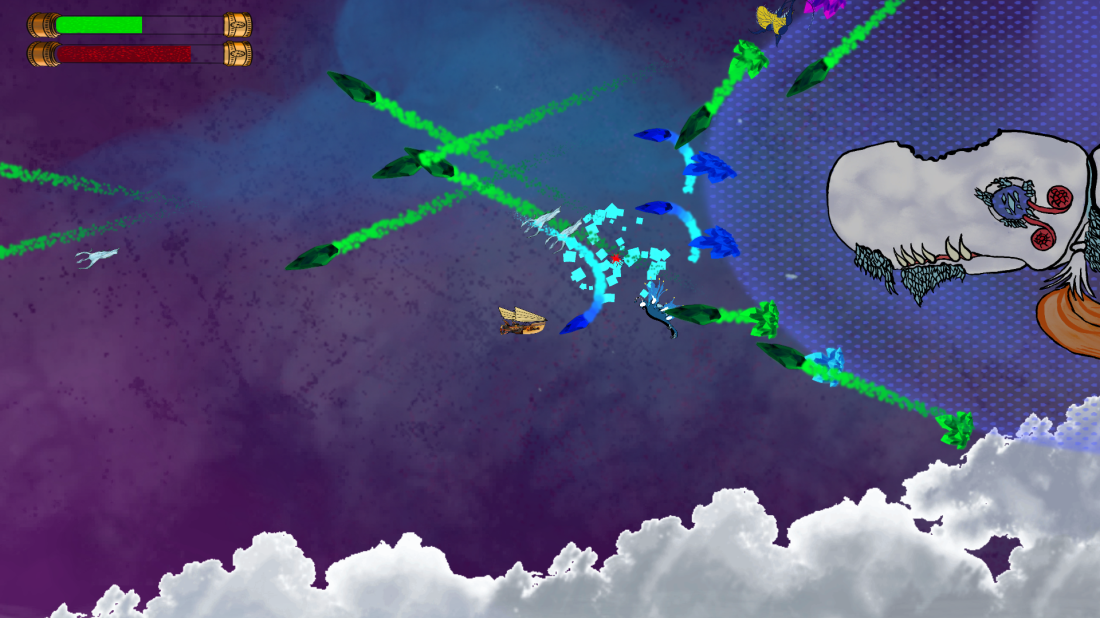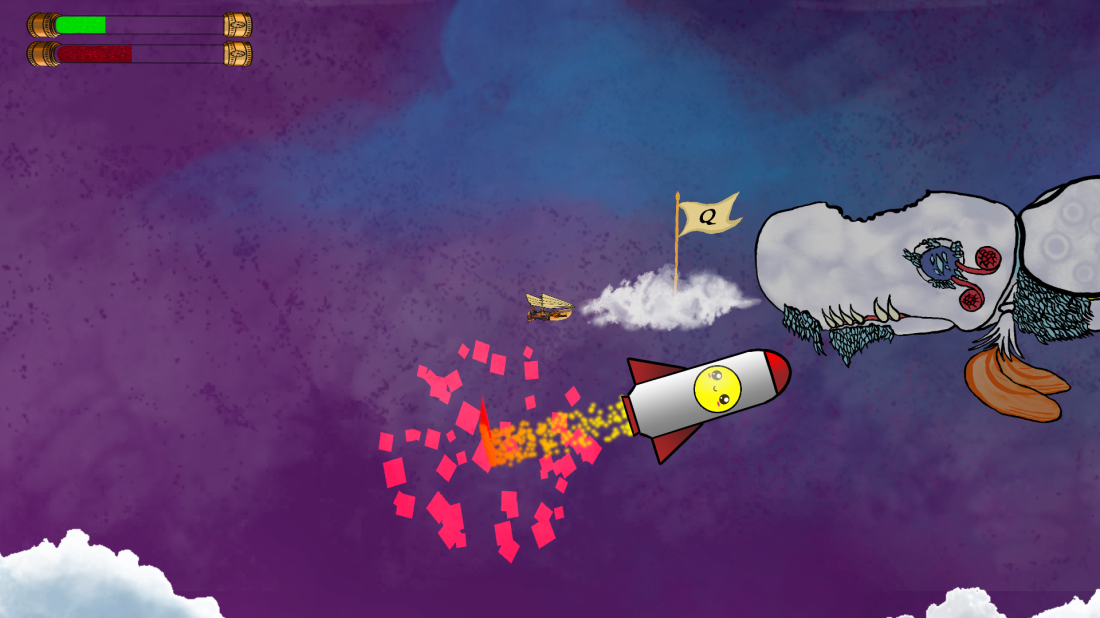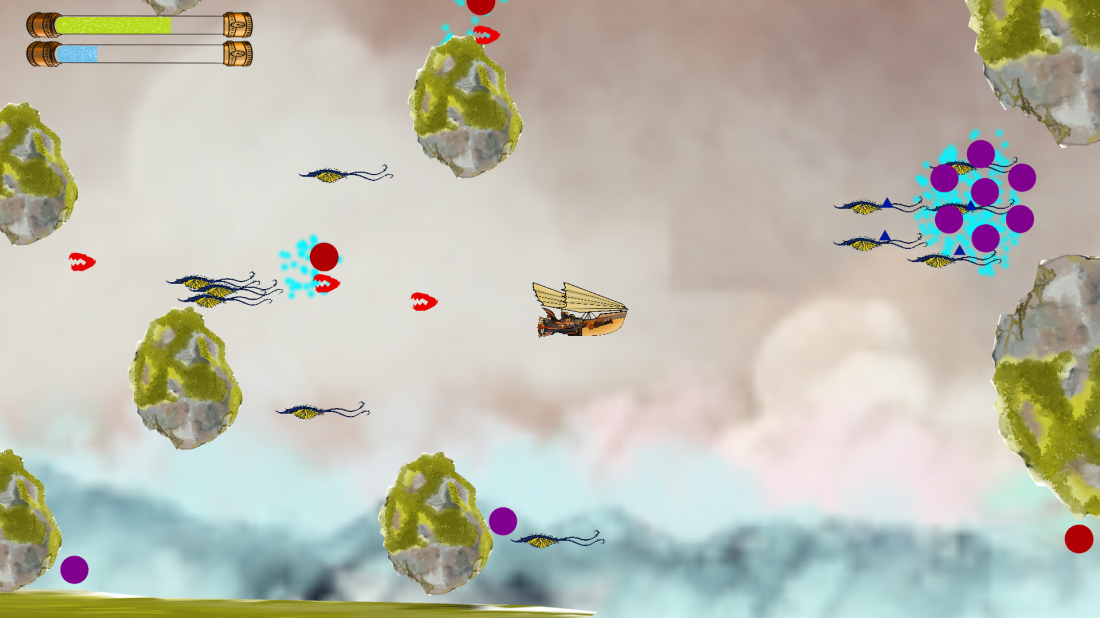
It’s been a rough road and a hectic ten weeks (especially the last one) but team Archon managed to pull together and complete our game. Am i happy with how the game turned out? As a whole I don’t dislike how the game turned out, I am however dissatisfied with my own lack of contribution. I have spent the most of the ten weeks trying to figure out what my role as lead designer meant to me and the team. And meanwhile there were so many things that went wrong or not to plan that makes pointing out the positives difficult. I don’t think our game turned out even remotely close to how anyone in the team had envisioned, especially not me. However this may have worked in our favor as I do believe our game turned out to be the most unique among the five Aetherial games made.
 The boss encounter, scrambled together during the last two days before the deadline
The boss encounter, scrambled together during the last two days before the deadline
Proper planning is crucial, our planning and estimation of work hours failed constantly, which lead to a gigantic crunch during the last week before the deadline during which it felt like half of the game was made. Despite this I think our game turned out alright, a bugg filled scrambled together mess of alright. Most of the people who played the finished game seemed to enjoy it, especially those who managed to win.
Our Aetherial set itself apart from the other Aetherial games by being the only one where you could decide the pace of the game yourself. Players could roam free within the bounds of the three stages we had, using the same strategy as the first Super Mario game; just go to the right. With three different ways of defeating enemies, the regular harpoon, the target seeking missiles and the teleport with an explosion radius, there was some variety to how players beat our game. Some took it slow aiming from afar with the harpoon, some did a speed-run past everything with the teleport, but most realized that spamming the missiles were the most efficient and easiest way to win. The game might seem hard at first glance or play-trough, but really it’s just a trick of overwhelming the players with enemies, especially the boss that could throw 20 things at once at the player (seen above) but all problems go away once the players learned to use the very overpowered missiles that clears the screen automatically.
 Defeating the boss rewards the player with a giant happy nuke that blows up the boss and the whole game too as it exits to the menu immediately.
Defeating the boss rewards the player with a giant happy nuke that blows up the boss and the whole game too as it exits to the menu immediately.
It was hard for me to find a way to document all the work we did properly, mostly because the actual work being carried out would change between planning and execution. I have mentioned in an earlier post that our programmers would discover that a planned was too difficult for them to carry out and change it into something else, as was the case with the missiles that our game features for example. These spontaneous changes were frustrating for me to keep track of as they didn’t get logged into the backlog properly. I have learned for future projects to put a much bigger emphasis on documentation to keep track of everything that gets done. If nothing else, it will be easier to learn from mistakes if they are documented with details.
Team Archon has now formally disbanded, which i feel is a bit of a shame as it felt like we have grown a lot as a group over the months we’ve worked together and worked more and more optimally with one another. Regardless, it was a fun learning from failure experience.

 The boss encounter, scrambled together during the last two days before the deadline
The boss encounter, scrambled together during the last two days before the deadline Defeating the boss rewards the player with a giant happy nuke that blows up the boss and the whole game too as it exits to the menu immediately.
Defeating the boss rewards the player with a giant happy nuke that blows up the boss and the whole game too as it exits to the menu immediately.

 The level layout used for the play-testing session would completely swarm the player.
The level layout used for the play-testing session would completely swarm the player.